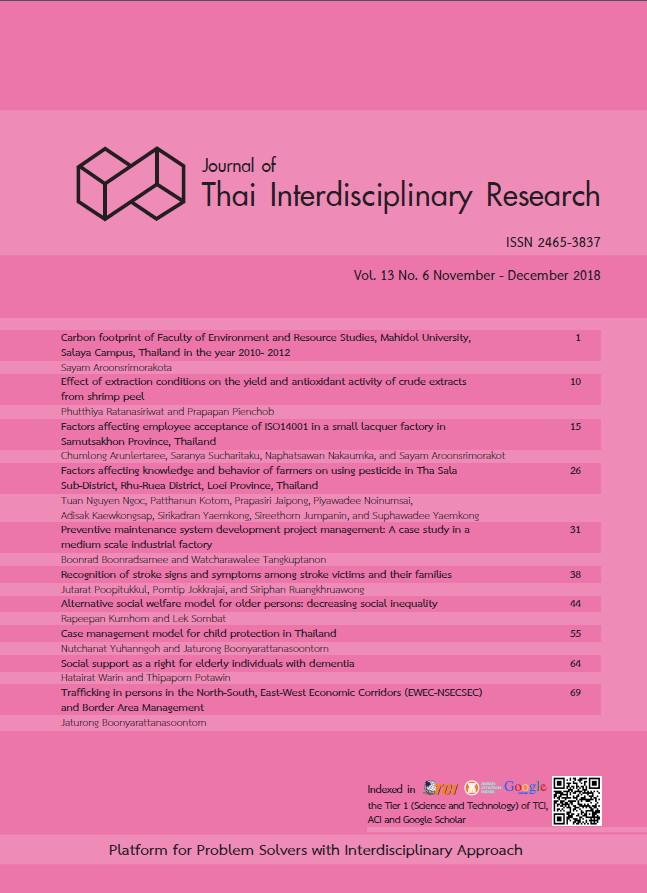Recognition of stroke signs and symptoms among stroke victims and their families
Main Article Content
Abstract
Having a stroke has a serious negative impact on patients and their families. The most negative potential impact is disability which could be reduced if the patients receive appropriate treatment within 4.5 hours. This study aimed to explore stroke victims and their families regarding their awareness of stroke signs and symptoms as well as their immediate management. The sample consisted of 23 stroke victims being admitted to a hospital. Among the 23 stroke victim only 14 of them could communicate well. The other 9 patients could not so the information was obtained from their relatives instead. The research instruments included a questionnaire and instructional interview. These aimed to ascertain the level recognition of stroke signs and symptoms, and immediate management from the interviewee. Data was collected by instructional as well as in-depth interview and observation. The results revealed that most of informants recognized the stroke signs and symptoms that the patient had had. These included 1) Sudden weakness of arm or leg on one side of the body, including uneven smile or numbness of face; 2) sudden trouble speaking or understanding including, slurred speech; 3) sudden trouble seeing in one or both eyes, including blurred or double vision; 4) sudden dizziness, vertigo, unable to walk a straight line, loss of balanced or coordination and 5) severe headache with unknown cause and vomiting or passing out. Among the 23 stroke victims, 14 arrived at the hospital within 3.5 hours. Of those having arrived at the hospital within 3.5 hour, 8 of them recognized all of the stroke signs and symptoms. Nine stroke victims did not come to a hospital immediately even though 6 of them recognized all of stroke signs and symptoms. These results suggested that most of the patient and families were aware of stroke signs and symptoms. Further studies should therefore investigate other factors associated with the recognition of stroke and their subsequent rapid travel to the hospital.
Article Details

This work is licensed under a Creative Commons Attribution-NonCommercial-NoDerivatives 4.0 International License.


